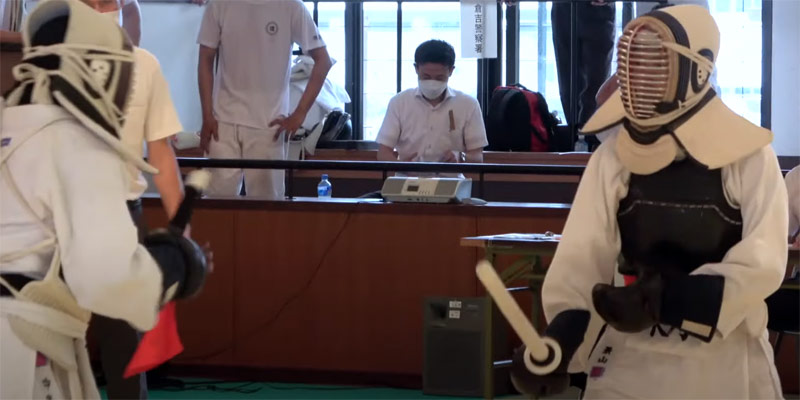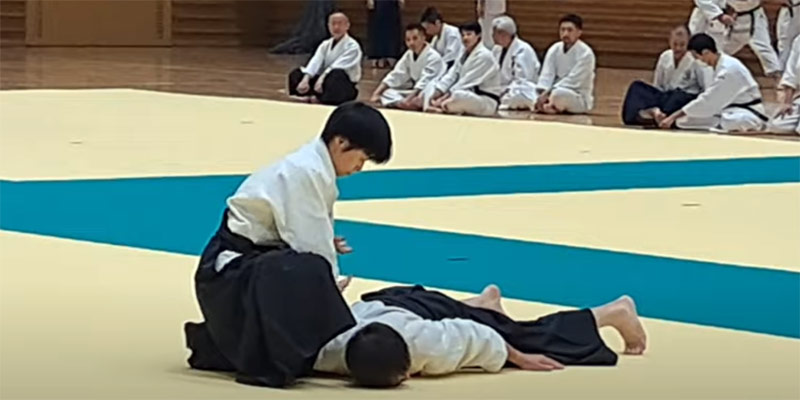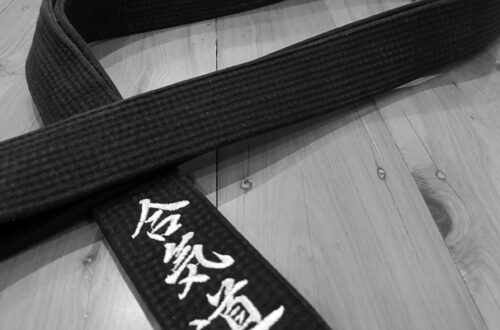
Aikido and Tokyo Metropolitan Police
Martial arts training stands as a cornerstone within the Tokyo Metropolitan Police Department 警視庁, serving as a pivotal element in the physical and mental preparation of police officers entering the demanding realm of law enforcement.
At the Metropolitan Police Academy 警察学校, martial arts form a compulsory subject, with cadets dedicating at least an hour each day to training. While both men and women share this training requirement, they have the flexibility to choose different disciplines based on their individual preferences and perceived benefits.
Male police officers often opt for Judo 柔道 or Kendo 剣道, disciplines that emphasize grappling techniques, striking maneuvers, and mental resilience. Conversely, female officers have the added option of Aikido 合気道, which was officially introduced as an elective martial arts offering in 2008. Aikido, renowned for its emphasis on redirecting force and fostering harmonious movement, provides female officers with a distinctive approach to self-defense that complements their physical attributes and communication skills. It enables them to neutralize threats without resorting to excessive force—a philosophy closely aligned with law enforcement principles prioritizing de-escalation and minimal use of force.
Approximately 60% of women opt for aikido training, with some regions even mandating its inclusion. Aikido sessions are conducted under the guidance of seasoned instructors from the Yoshinkan 養神館 school, ensuring officers receive expert tutelage in mastering the techniques and mindset essential for effective self-defense and conflict resolution.

Metropolitan police taihojutsu competition
In contrast to aikido’s passive approach, taihojutsu 逮捕術 is mandatory for both male and female officers. This comprehensive training regimen encompasses a spectrum of tactics aimed at safely subduing and apprehending suspects while minimizing the risk of injury to all parties involved. While aikido shares certain similarities with taiho-jutsu, such as throwing and joint-locking techniques, taiho-jutsu incorporates striking maneuvers, the use of batons, and adopts a more proactive stance in neutralizing threats.
Annually, a select group of officers from the Tokyo Metropolitan Police Department Riot Police 警視庁機動隊 are chosen to participate in an intensive aikido training course known as Aikido Senshusei 合気道専修生. This specialized program was established by Gozo Shioda 塩田 剛三, founder of Yoshinkan Aikido, in 1957 specifically for riot police officers. Shidoa was one of Morihei Ueshiba’s most senior students. Yoshinkan is more akin to the pre-war aikido (aiki-budo) techniques taught by Ueshiba, and is generally considered a harder style of aikido. The course was later, in the 1980s, opened to non-police candidates and foreign students interested in becoming instructors. The course is physically demanding, requiring participants to train three classes a day, five days a week, for eleven months. Successful completion of the course grants participants a shodan 初段 rank and instructor qualification. However, due to its rigorous nature, it is not uncommon to see participants withdrawing from the program.

Tokyo metropolitan police’s demonstration in the 68th All Japan Yoshinkan Aikido Comprehensive Embu Taikai
Moreover, the Tokyo Metropolitan Police Department actively participates in the All Japan Yoshinkan Aikido Comprehensive Embu Taikai 全日本養神館合気道総合演武大会, where practitioners from Japan and abroad demonstrate spirited Embu performances. The department has received the Outstanding Demonstration Award 優秀演武賞 on numerous occasions. The event typically features Competitive Demonstrations 競技演武, where individuals showcase precise, timed techniques, and Group Demonstrations 団体演武, emphasizing teamwork and the fluidity of aikido techniques. Awards are presented to outstanding performers.
In conclusion, martial arts, particularly aikido, play an indispensable role in the training and development of police officers within the Tokyo Metropolitan Police Department. From enhancing physical fitness to honing self-defense skills and promoting a mindset of harmony and control, martial arts training equips officers with the tools necessary to navigate the complexities of law enforcement with professionalism and confidence.
Author’s Note: We appreciate your readership! This article serves as a preliminary introduction to the subject matter. While we aim for accuracy, we cannot guarantee the content’s precision and it may contain elements of speculation. We strongly advise you to pursue additional research if this topic piques your interest. Begin your AikidoDiscovery adventure! 🙂




